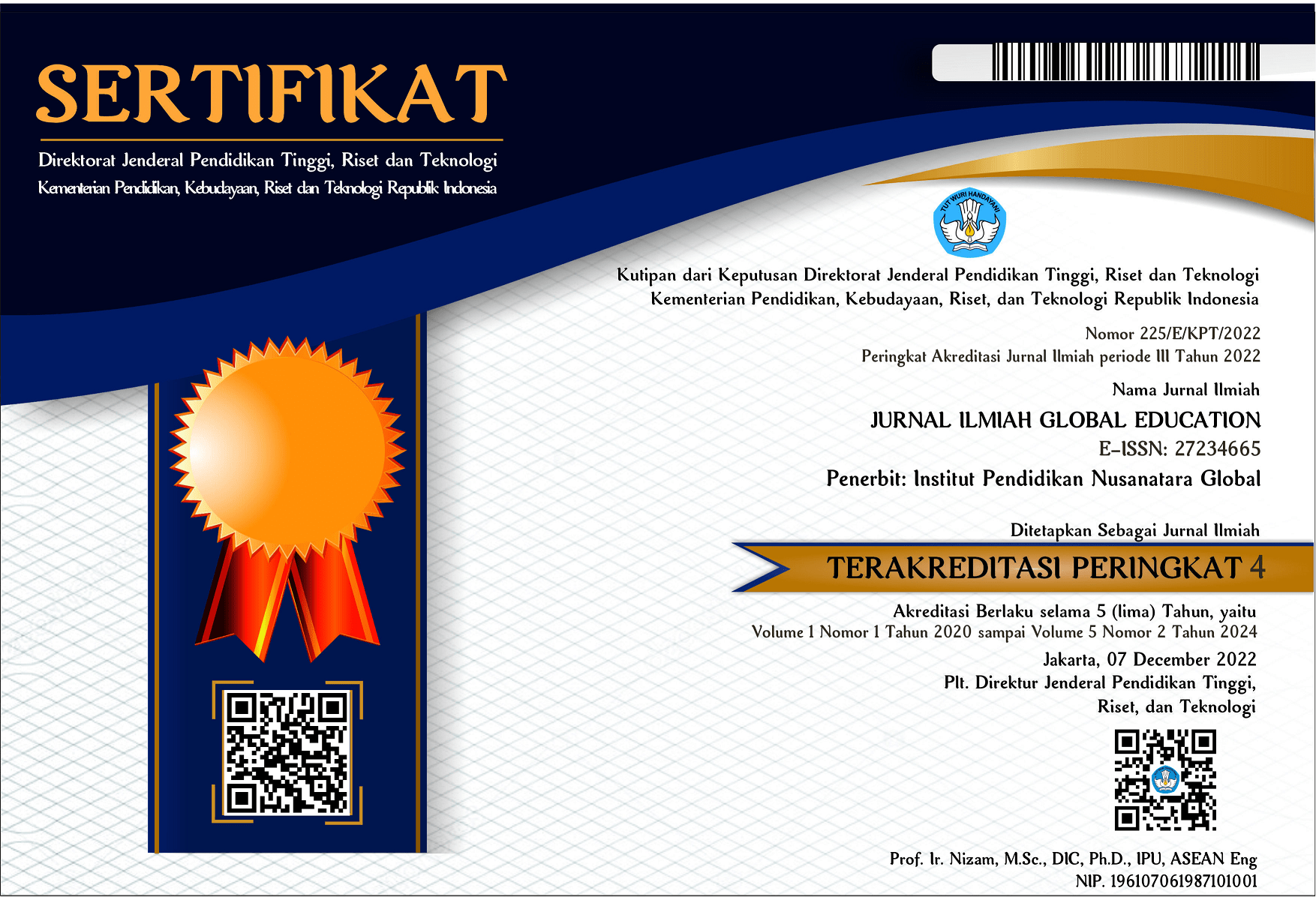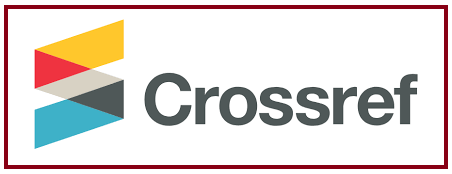Tantangan dan Peluang: Dinamika Keuangan Bisnis Mikro Dalam Budaya Patriarki UMKM Semarang
DOI:
https://doi.org/10.55681/jige.v5i2.2552Keywords:
Business Characteristics, Characteristics of entrepreneurs, Business Performance, Ptriarchy Culture, Retrieval cleanliness formal debt decision, Organizational CultureAbstract
This research aims to explore the influence of business characteristics and entrepreneur characteristics on the independence of formal debt decision making, by considering the moderating role of patriarchal culture. This study also aims to examine the impact of formal debt decision-making independence on business performance. The research was conducted through a survey of 248 female entrepreneurs in the food and beverage processing sector in Semarang. The research method uses descriptive and inferential analysis, with hypothesis testing carried out using Structural Equation Modeling Partial Least Square (PLS). The findings show that business characteristics and entrepreneur characteristics have a positive and significant influence on the independence of formal debt decision making. In addition, patriarchal culture is proven to play a moderating role, influencing the relationship between business characteristics/ entrepreneur characteristics and the independence of formal debt decision making. In other words, patriarchal culture modifies the influence of business characteristics and entrepreneur characteristics on formal debt decisions. The analysis also shows that independence in formal debt decision making has a positive impact on business performance. Thus, the results of this research imply the importance of independence in making formal debt decisions for female entrepreneurs in the food and beverage industry in Semarang.
Downloads
References
Cahaya, A. D., Widyastuti, M. L., & Fatharani, H. (2021). Peran Perbankan dalam Pembiayaan UMKM di Tengah Pandemi Covid-19. Jurnal Ilmiah Keuangan Dan Perbankan (FIDUSIA), 4(2), 138–149. http://fe.ummetro.ac.id/ejournal/index.php/JPK/article/view/613
Chun-Kay, S. C. (2003). An Investigation of the Success Young Chinese Entrepreneurs i n Factors of Hong Kong.
Danescu, T., & POPA, M.-A. (2020). The Inter-conditioning between Corporate Governance and Financial Performance. Audit Financiar, 18(159), 578–584. https://doi.org/10.20869/auditf/2020/159/021
Espinosa, M., Gietzmann, M., & Raonic, I. (2009). US institutional investors response to the news flow of intangibles intensive European stocks: A study of European Biotech and Pharma stocks. European Accounting Review, 18(1), 63–92. https://doi.org/10.1080/09638180802481581
Farlina, W., Sari, M. N., Bisnis, A., & Padang, S. A. (2021). Dampak Covid- 19 Terhadap Profit Pengusaha Wanita di Kuranji Kota Padang. 1(1), 48–52.
Fowowe, B. (2017). Access to finance and firm performance : evidence from African countries. Review of Development, 7 No 1.
García-Quevedo, J., Segarra-Blasco, A., & Teruel, M. (2018). Financial constraints and the failure of innovation projects. Technological Forecasting and Social Change, 127(April 2016), 127–140. https://doi.org/10.1016/j.techfore.2017.05.029
García-Vidal, G., Sánchez-Rodríguez, A., Pérez-Campdesuñer, R., & Martínez-Vivar, R. (2019). The impact of self-confidence, creativity and vision on leadership performance: Perceptions at Ecuadorian SMEs owner/managers. Serbian Journal of Management, 14(2), 315–325. https://doi.org/10.5937/sjm14-17569
Giang, M. H., Trung, B. H., Yoshida, Y., Xuan, T. D., & Que, M. T. (2019). The causal effect of access to finance on productivity of small and medium enterprises in Vietnam. Sustainability (Switzerland), 11(19), 1–19. https://doi.org/10.3390/su11195451
Hollenbeck, G.P., & Hall, D. T. (2004). Self-confidence and Leader Performance. Organizational Dynamics, 33 (3), 254-269.
Huang, J.-C., Tseng, J.-J., & Lin, H.-C. (2020). the Impact of Financial Constraint on Firm Growth: an Organizational Life Cycle Perspective and Evidence From Taiwan. The International Journal of Organizational Innovation, 12(3), 266. http://www.ijoi-online.org/http://www.ijoi-online.org/
Huang, J. I. E., Chen, C., Ye, F., Hu, W., & Zheng, Z. (2020). Nonuniform Hyper-Network Embedding. 38(3).
Kayemuddin, M. D. (2012). Leadership in Small Business in Bangladesh. International Journal of Entrepreneurship, 16, 25–35.
Koçak, A., & Edwards, V. (2005). Independence and co-operation among small businesses: The case of the Turkish shotgun industry in a period of recession. International Journal of Entrepreneurial Behaviour & Research, 11(3), 186–200. https://doi.org/10.1108/13552550510598781
Konno, Y. (2014). Default or exit? Empirical study on SMEs in the Japanese construction industry. Construction Management and Economics, 32(10), 1017–1029. https://doi.org/10.1080/01446193.2014.927068
Liu, W., Dong, Y., Chiclana, F., Cabrerizo, F. J., & Herrera-Viedma, E. (2017). Group decision-making based on heterogeneous preference relations with self-confidence. Fuzzy Optimization and Decision Making, 16(4), 429–447. https://doi.org/10.1007/s10700-016-9254-8
Madanchian, M., Hussein, N., N., & F., & Taherdoost, H. (2017). Leadership Effectiveness Measurement and Its Effect on Organization Outcomes. Procedia Engineering, 181, 1043–1048.
Nisar, S., Jabeen, N., & Sheikh, L. (2018). Reinventing Public Sector for Innovativeness and Performance: A Case Study of University of the Punjab, Lahore. South Asian Studies, 33(1), 49.
Novotny-Farkas, Z. (2016). The Interaction of the IFRS 9 Expected Loss Approach with Supervisory Rules and Implications for Financial Stability. Accounting in Europe, 13(2), 197–227. https://doi.org/10.1080/17449480.2016.1210180
Oudgou, M. (2021). Financial and Non-Financial Obstacles to Innovation: Empirical Evidence at the Firm Level in the MENA Region. Journal of Open Innovation: Technology, Market and Complexity, Vol 7,
Peng, H., & Wei, F. (2020). How and When Does Leader Behavioral Integrity Influence Employee Voice ? The Roles of Team Independence Climate and Corporate Ethical Values. 505–521.
Sodré, M. (2020). Corporate Social Performance and Financial Performance in Brazilian Companies: Analysis of the Influence of Disclosure. Scielo, 15. https://www.scielo.br/scielo.php?script=sci_arttext&pid=S1808-23862020000500540&lang=pt
Su, R., Liu, C., & Teng, W. (2020). the Heterogeneous Effects of Csr Dimensions on Financial Performance – a New Approach for Csr Measurement. Journal of Business Economics and Management, 21(4), 987–1009. https://doi.org/10.3846/jbem.2020.12394
Wang, Y., & Chang, Y. (2019). What you are confident of determines your choices in context: Confidence in yourself versus in your ability. Journal of Behavioral Decision Making, 32(4), 375–387. https://doi.org/10.1002/bdm.2120
Yuan, C.-K., & Lee, C.-Y. (2011). Exploration of a construct model linking leadership types, organization culture, employees performance and leadership performance. Procedia - Social and Behavioral Sciences, 25, 123–136.
Zhou, Z., Placca, E., Jin, Q., Liu, W., & Wu, S. (2018). Banks efficiency and productivity in Togo after the financial liberalization: A combined Malmquist index approach. Infor, 56(3), 317–331. https://doi.org/10.1080/03155986.2017.1337416
Downloads
Published
How to Cite
Issue
Section
License
Copyright (c) 2024 Sri Suyati, Siti Aminah, Khamimah, Supratiningrum

This work is licensed under a Creative Commons Attribution-ShareAlike 4.0 International License.













